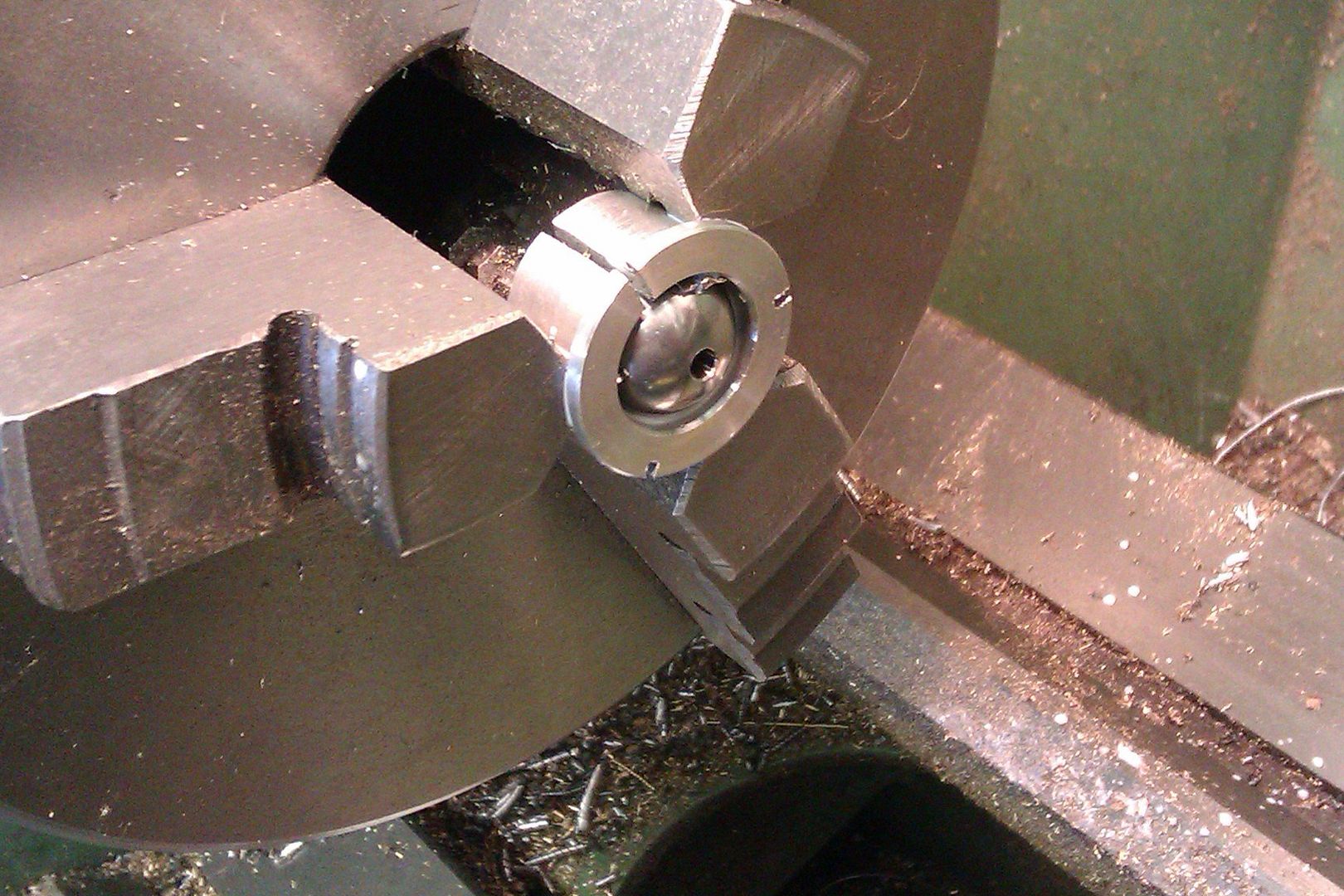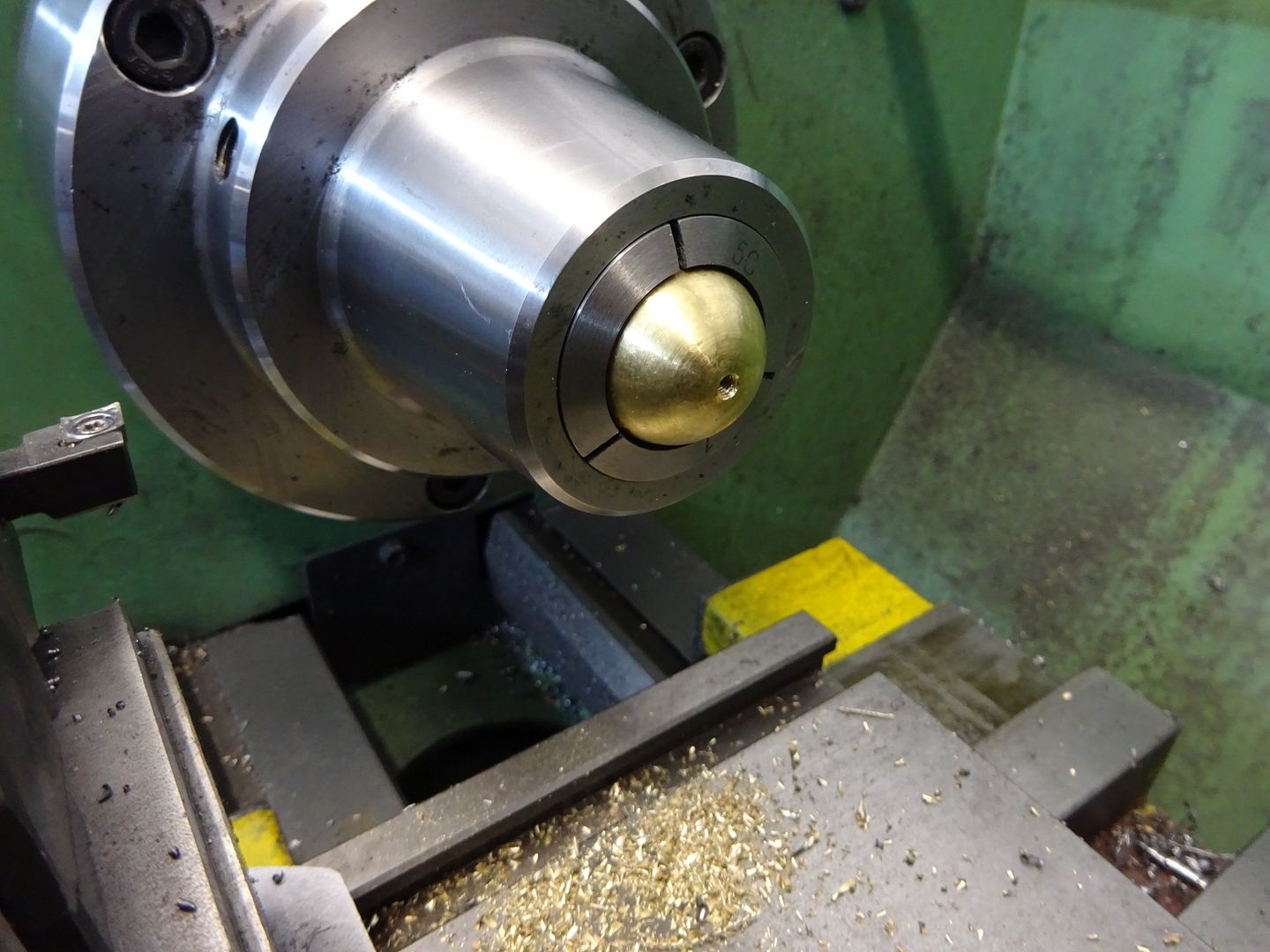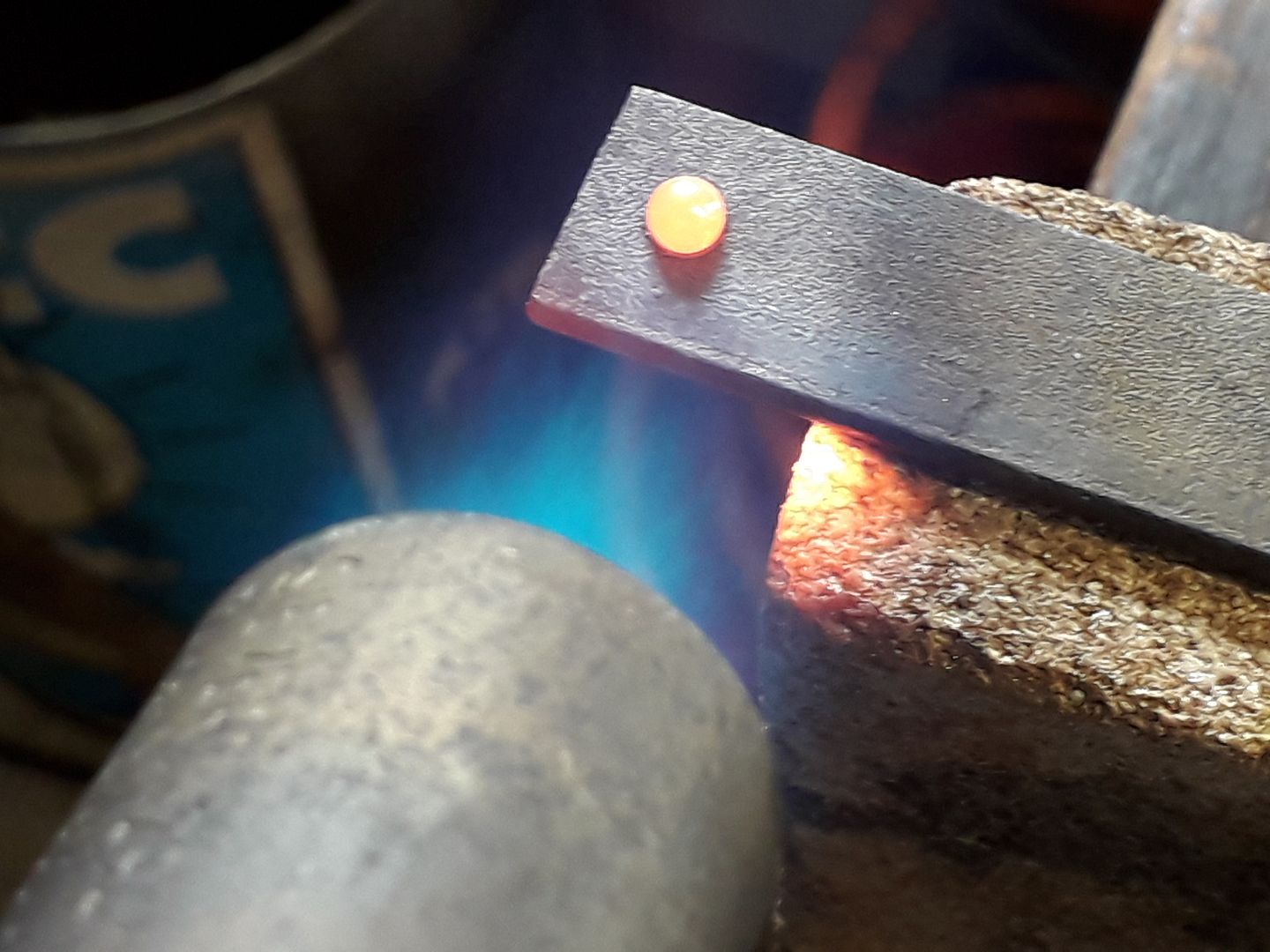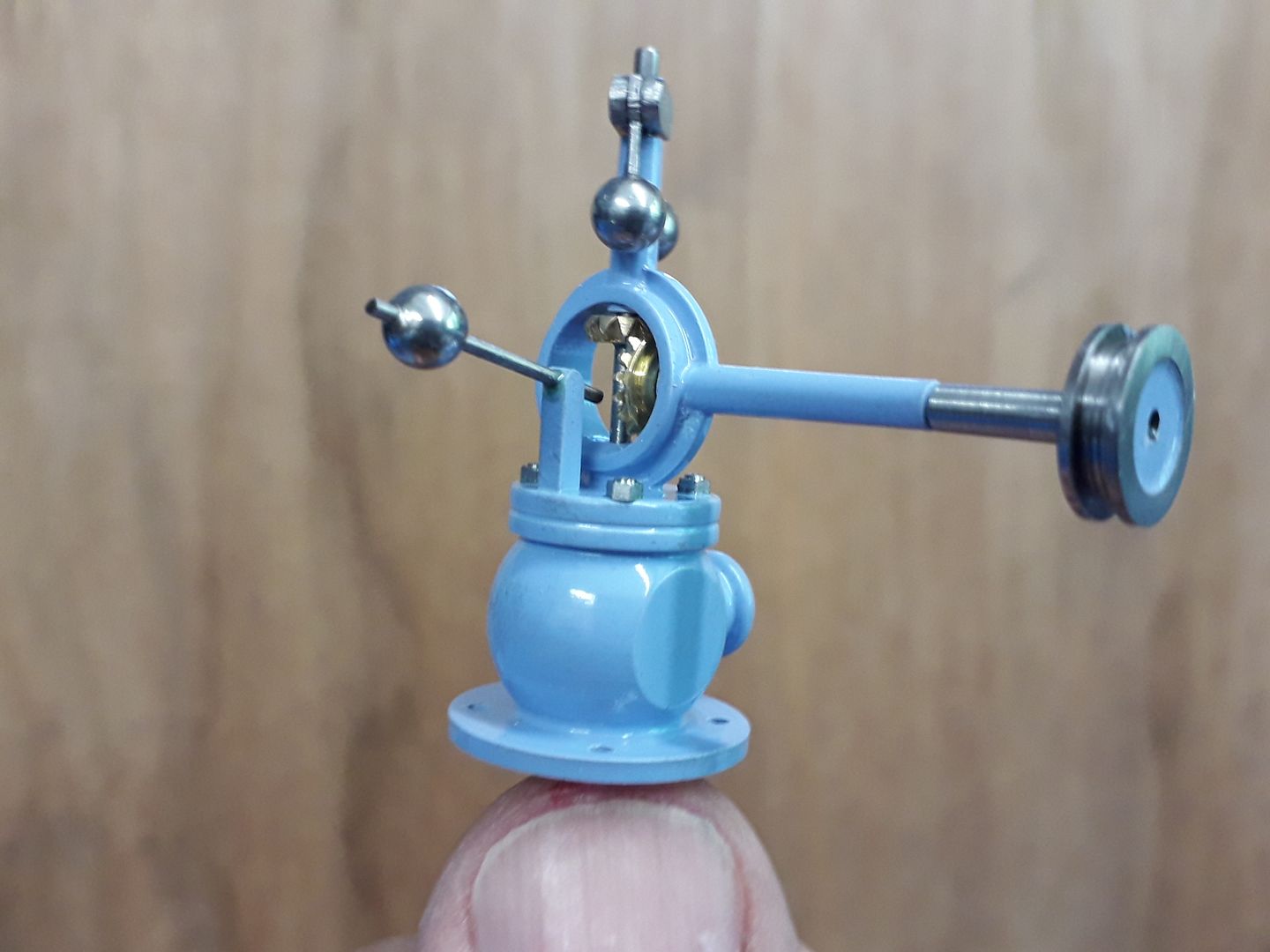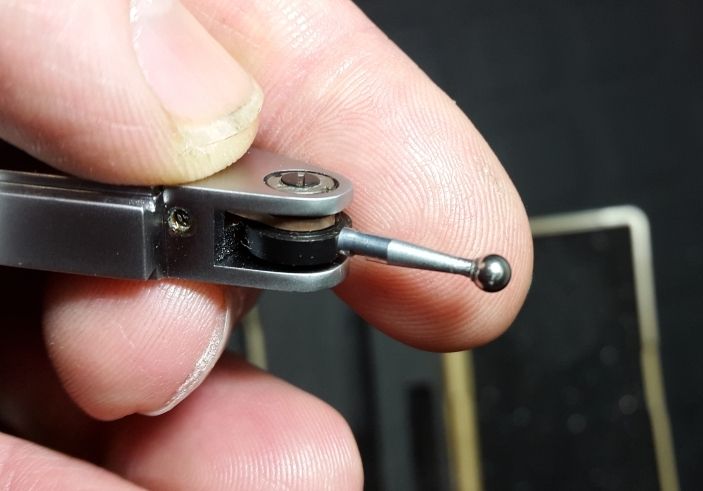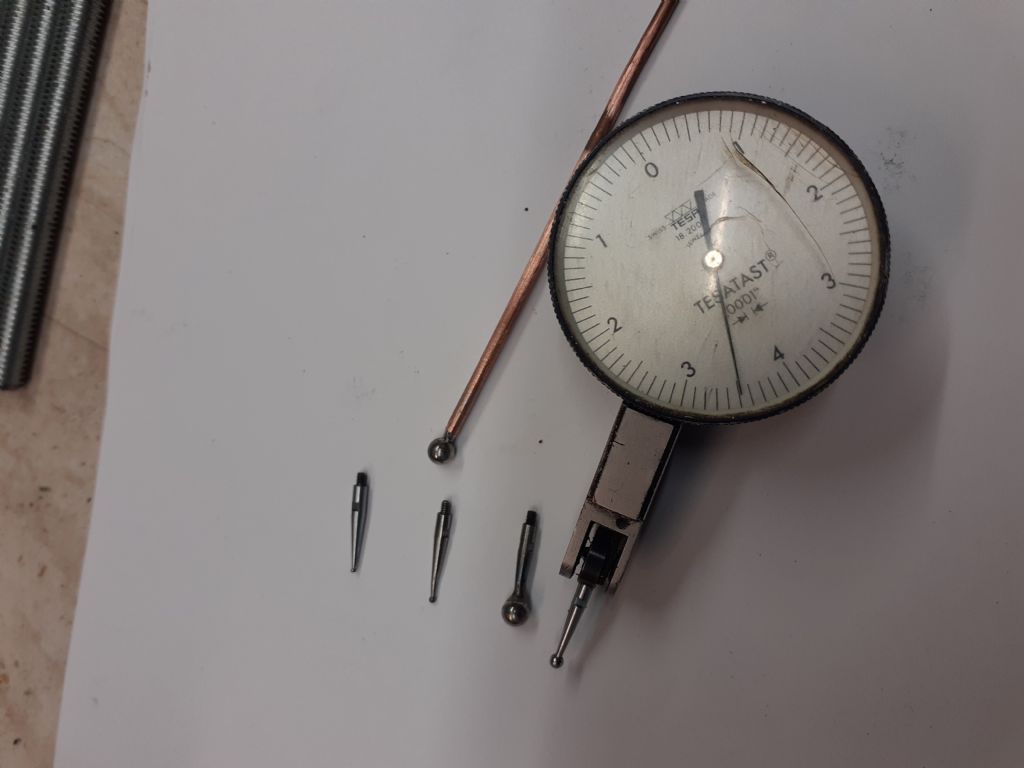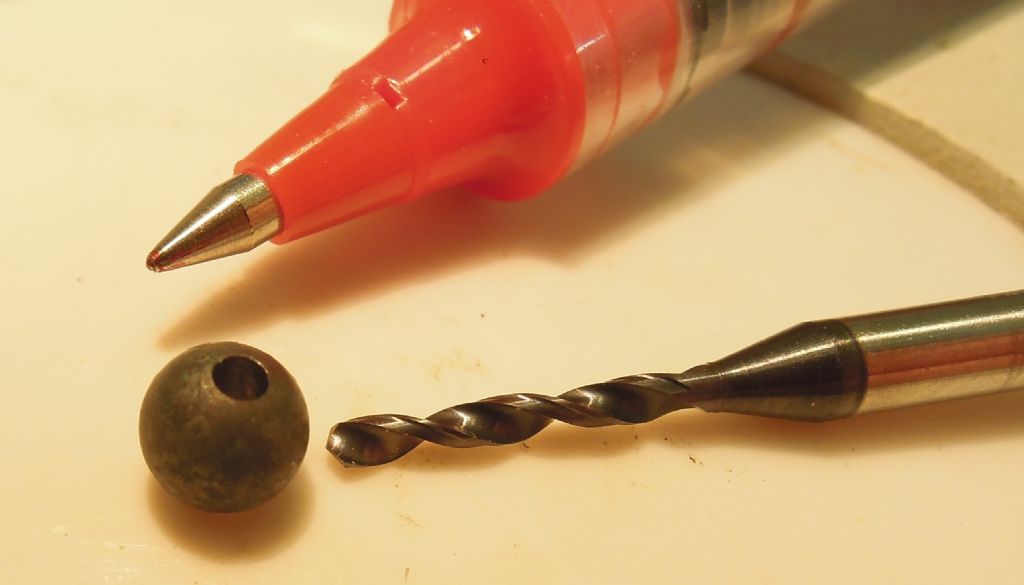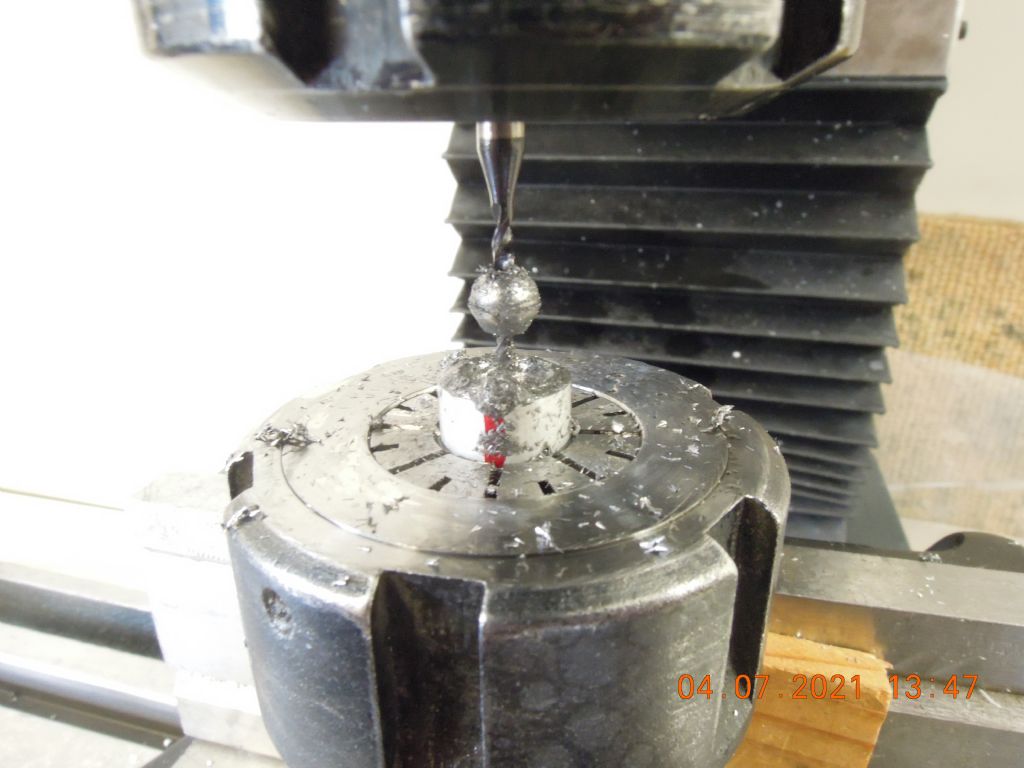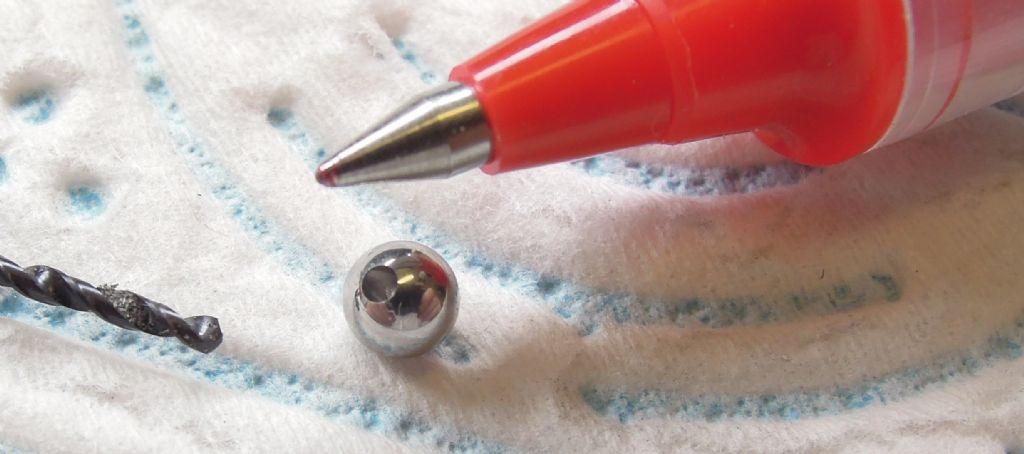Thanks all for your thoughts and guidance on how to drill holes in balls. After some trial and error I think I have perfected the art a little further and just to help the next one along that wants to do something similar here is the technique that seemed to work well for me.
1) Hold a small piece of a relatively soft material like aluminium in the mill vice. Check the vice is secure and the X and Y slides are locked solidly.
2) Using a conventional centre-drill make a hole in the material. Select a size of centre drill that will ensure that the ball doesn't rest on the entrance to the cylindrical portion of the hole. The ball will be much more stable when it sits in the 'V' portion.
3) Put the ball in the hole then, protecting it with a piece of soft metal to prevent surface damage, give the ball a bit a bit of a thump with a hammer. This will plastically deform the soft seating material and increase the area of contact of the ball in its 'socket'.
4) Remove the ball and put a little super-glue on the seating. Replace the ball and press it into its socket for about 30m seconds.
5) If you still haven't moved those X and Y slides the quill will still be completely concentric with the ball that you want to drill. Its now just a case of drilling with your carbide drill. But one needs to be a little bit 'sensitive' to ensure that the drill doesn't wander off the centre due to other 2nd order excentricities such as chuck runout etc. To help, what I did was remove the strong return spring in my Wabeco mill's quill. Once this was out the quill will drop slowly with only viscous drag under its own weight. The quill clamp should of course be adjusted to remove as much clearance as possible but too much that is stops the quill from moving.
6) Let the drill run for about 1 minute with only 'quill weight' on the drill. Once it's made a small indent you can safely begin to apply finger pressure on the quill arm and begin to cut at a much faster rate. (This is enough to get through a 3mm ball in about 45 seconds running at 3000RPM. )
7) I couldn't tell if there was much heat being developed in the cut but I dont think so. Quite honestly though with such small parts its difficult to tell what's going on anywhere ! What one does find though is debris builds up and obscures the workpiece so I stopped every so often and cleaned things up with a squirt of WD40.
8) When the drill is through the ball it very kindly pulls the ball out of the socket for you. All you need to do then is slide the ball off the drill and drop it in some acetone to dissolve the remaining hardened glue.

9) If you haven't loaded up the quill too much you will have no chipping on the surface of the ball at break out. You will also have a very high quality hole. For some strange reason the hole is always very slightly tighter on one end. I haven't worked out whether this occurs at the entrance or exit end but its a very small amount and not something that should worry most people.

With this technique I feel I could drill holes in bearing balls all day long, completely concentrically and without any surprises or broken drills, and probably on an even smaller scale too. I hope others find this useful.
Gerry
 Michael Gilligan.
Michael Gilligan.

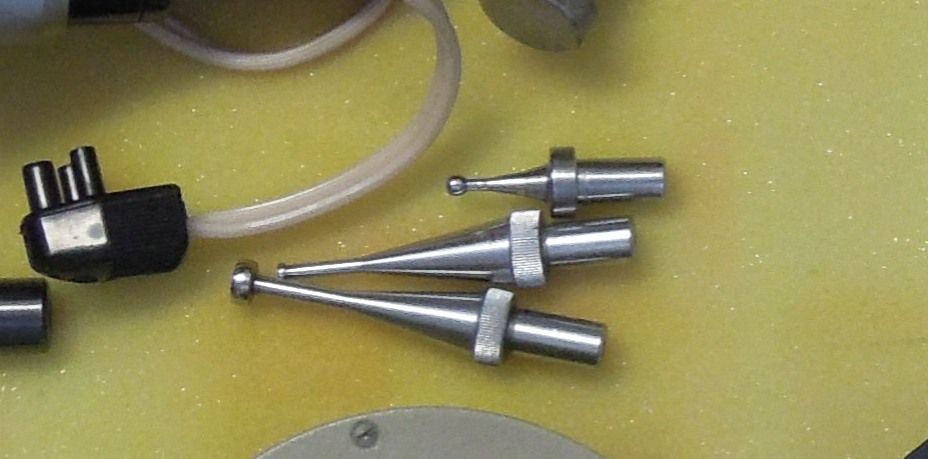
 and glue in on to the turned body. The hardness and smoothness of the ball will be advantageous also.
and glue in on to the turned body. The hardness and smoothness of the ball will be advantageous also.